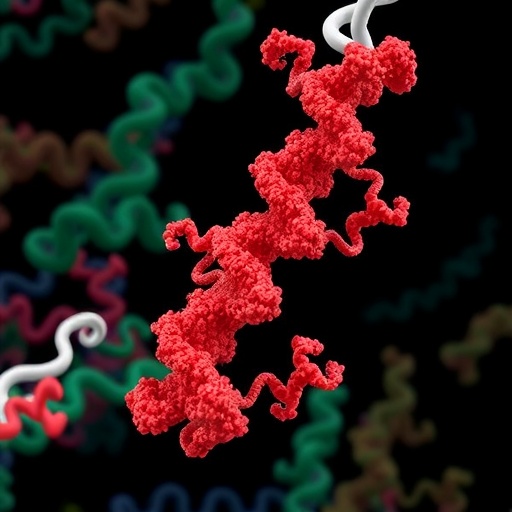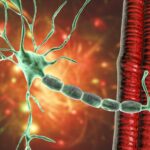
In the intricate world of cellular biology, the fidelity with which DNA sequences are read underpins life itself. This essential process, known as gene expression, governs when and where specific genetic instructions are activated within cells, shaping their identity and function within the body. However, this precision is vulnerable: errors in gene regulation can lead to catastrophic consequences, including the onset of cancers and neurodevelopmental disorders. Recent groundbreaking research from the University of Geneva (UNIGE) has illuminated two pivotal proteins involved in the fine-tuned regulation of gene accessibility, offering a promising new horizon for more targeted and less toxic therapies.
Gene expression is tightly controlled by the architectural state of chromatin, the complex of DNA and proteins that compacts genetic material into the microscopic confines of the cell nucleus. If fully stretched out, human DNA spans nearly two meters, but within a cell measuring mere micrometers, an extraordinary level of organization is required. Chromatin serves this purpose, condensing DNA so that it fits, but its condensed nature inherently restricts access to the genetic code. Therefore, gene expression hinges on the dynamic remodeling of chromatin to expose specific DNA sequences, allowing the cell’s molecular machinery to appropriately read and execute genetic instructions.
This remodeling process, an epigenetic regulation mechanism, involves an orchestrated interplay of proteins that can loosen or tighten chromatin structure as needed. The failure to precisely regulate this remodeling can have severe consequences. According to Simon Braun, assistant professor at the UNIGE Faculty of Medicine, improper chromatin exposure can activate segments of DNA that should remain silent, leading to dysfunction. In skin cells, such misregulation may spur abnormal cell growth, a hallmark of cancer development. Similarly, in neurons, disrupted chromatin remodeling is increasingly implicated in disorders such as autism, where developmental trajectories are perturbed.
.adsslot_95O28tY401{ width:728px !important; height:90px !important; }
@media (max-width:1199px) { .adsslot_95O28tY401{ width:468px !important; height:60px !important; } }
@media (max-width:767px) { .adsslot_95O28tY401{ width:320px !important; height:50px !important; } }
ADVERTISEMENT
Until now, the molecular players orchestrating chromatin remodeling have only been partially understood. The UNIGE team, led by Simon Braun and prominently featuring doctoral researcher Hanna Schwämmle, has made a significant leap by identifying two proteins—MLF2 and RBM15—that serve as key regulators in this process. Their discovery represents a pivotal advancement in understanding how chromatin accessibility is modulated and opens new avenues for therapeutic intervention, especially for diseases underpinned by chromatin dysfunction.
Leveraging the revolutionary CRISPR-Cas9 technology, the UNIGE researchers undertook a comprehensive screen of over 20,000 genes to pinpoint those crucial in regulating chromatin remodeling. CRISPR-Cas9, developed in 2012 by Jennifer Doudna and Emmanuelle Charpentier, allows precise modification or inactivation of target genes, revealing their cellular roles with unprecedented clarity. Through this genome-wide functional analysis, the genes coding for MLF2 and RBM15 emerged as central modulators of chromatin structure and gene expression dynamics.
MLF2 (Myeloid Leukemia Factor 2) and RBM15 (RNA Binding Motif Protein 15) are proteins previously noted in diverse cellular contexts but not directly connected to chromatin remodeling at this scale. The new findings indicate that these proteins act as “gatekeepers,” facilitating or restricting the opening of chromatin at specific genomic loci. By doing so, they influence which parts of the genome are transcriptionally active, effectively maintaining cellular identity and preventing aberrant gene activation associated with disease states.
Importantly, the research highlights the therapeutic potential of modulating MLF2 and RBM15 activity. Current cancer treatments often lack specificity, leading to widespread tissue toxicity and severe side effects. Targeting these newly identified proteins may permit a more refined approach, one that reinstates proper chromatin architecture and gene expression with minimal collateral damage. Such strategies could revolutionize the treatment landscape for cancer and neurological disorders alike, introducing treatments that are not only more effective but also better tolerated.
The mechanistic insights gained from this study also deepen our understanding of how chromatin remodeling complexes assemble and function. The research, published in Nature Communications, delves into the molecular assembly of the SWI/SNF complex, a key chromatin remodeler implicated in various cancers. By decoding the assembly pathway through CRISPR screening, the scientists delineated the interactions with MLF2 and RBM15, providing a blueprint for how these proteins integrate into chromatin remodeling machinery to exert their effects.
Looking forward, the UNIGE team aims to translate these molecular discoveries into clinical advances. The immediate research trajectory involves testing whether inhibiting or modulating MLF2 and RBM15 can selectively kill cancer cells or merely inhibit their proliferation. Determining this distinction is critical for developing therapies that either eliminate malignancies outright or contain their growth. Further, identifying small molecules or biologics that effectively target these proteins will be crucial steps toward therapeutic development.
This discovery also opens questions about the broader implications of chromatin remodeling in neurodevelopment and other complex diseases. Since chromatin regulation is a universal mechanism affecting virtually all cell types, aberrations may contribute to a spectrum of disorders beyond cancer, including autism, intellectual disabilities, and psychiatric conditions. Understanding and manipulating MLF2 and RBM15 functions could thus herald multifaceted therapeutic opportunities.
From a broader scientific perspective, the study exemplifies the power of functional genomics coupled with cutting-edge gene editing. By systematically disabling genes one at a time and observing the resulting cellular effects, researchers can untangle the complex web of molecular interactions governing cell function. This approach transcends traditional correlative studies, equipping scientists with definitive causal insights that inform drug discovery.
In conclusion, the identification of MLF2 and RBM15 as master regulators in chromatin remodeling represents a landmark achievement in the quest to decode gene expression control. These findings not only shed light on the fundamental biology underpinning cellular identity and disease but also lay the groundwork for innovative treatments aimed at safely restoring chromatin integrity. As research advances, the promise of harnessing these proteins to combat cancer and neurodevelopmental disorders grows ever closer to reality, heralding a new era in precision medicine.
Subject of Research: Regulation of chromatin remodeling via MLF2 and RBM15 proteins
Article Title: “CRISPR screen decodes SWI/SNF chromatin remodeling complex assembly”
News Publication Date: 30-May-2025
Web References: 10.1038/s41467-025-60424-x
Keywords: Gene expression, chromatin remodeling, MLF2, RBM15, CRISPR-Cas9, epigenetics, cancer therapy, neurodevelopmental disorders, SWI/SNF complex, functional genomics, epigenetic regulation, precision medicine
Tags: cellular biology and cancerchromatin structure and functionDNA accessibility and gene regulationgene expression regulation in cancerinnovative cancer therapy strategiesmolecular mechanisms of gene expressionneurodevelopmental disorders and gene expressionnovel protein targets in cancer therapyprecision medicine in oncologytargeted cancer treatment innovationstherapeutic proteins for cancerUniversity of Geneva cancer research


